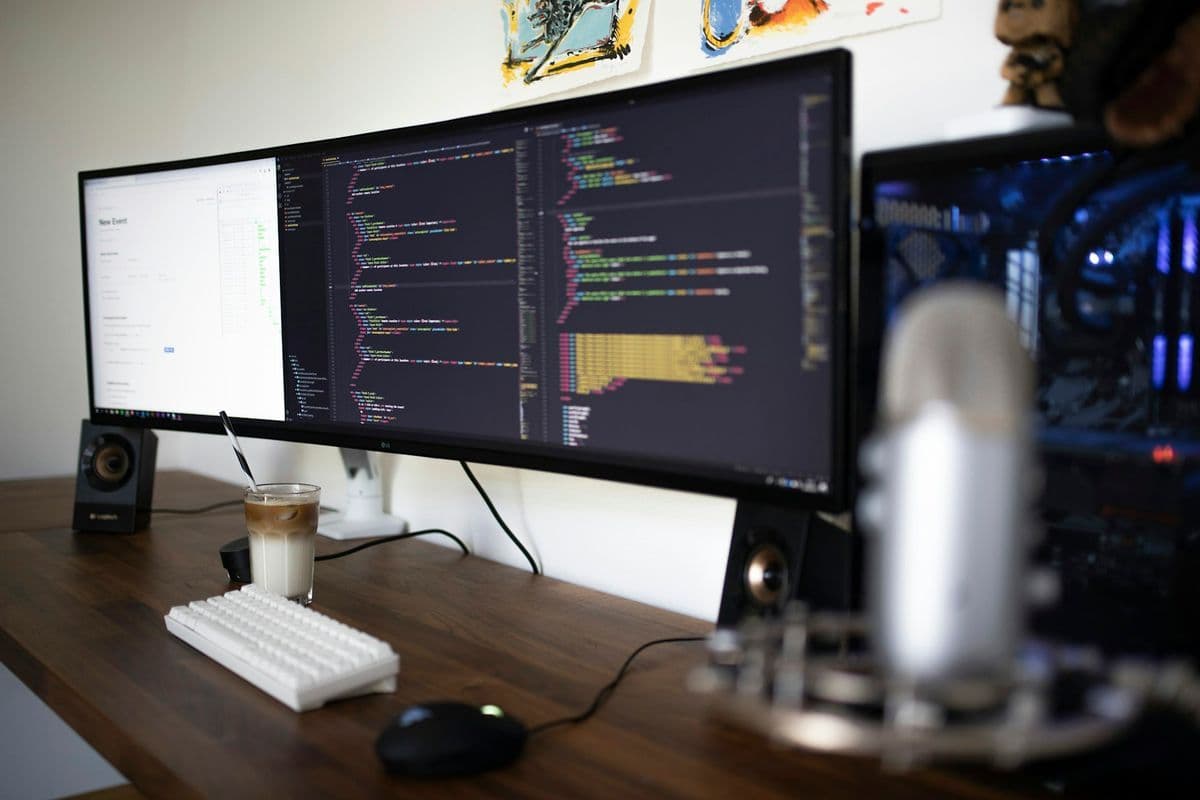Server-side rendering, or SSR, is a powerful technique that's become increasingly important in modern web development. At its core, SSR sends pre-rendered HTML directly from the server to the browser, so users can see content almost instantly when the page loads.
Compare that to client-side rendering (CSR), where the browser has to do the heavy lifting, downloading JavaScript, building the page, and only then displaying it, and you can already see why SSR is having a moment.
But here's the thing: SSR delivers both speed and strategy. With CSR and Single Page Applications (SPAs), while they're great for dynamic user experiences, they sometimes struggle when it comes to SEO and accessibility.
Search engines and users alike appreciate content that's ready to go right out of the gate, and that's where SSR shines.
Thanks to Next.js, SSR has become more accessible and efficient than ever. With continuous improvements in server technology and rendering optimizations, you've got a technology that's becoming indispensable for businesses looking to stay competitive.
Faster load times, better search rankings, and improved usability? It's no wonder SSR is becoming a cornerstone of high-performing web strategies.
Benefits of Server Side Rendering
Server-side rendering (SSR) brings a host of advantages to modern web development, especially for startups aiming to stay ahead in competitive markets. One of the standout benefits is how SSR accelerates initial load times. By sending fully rendered HTML directly to the browser, websites skip the "blank screen" phase typical of client-side rendering.
Users see content instantly, which improves their experience and keeps them engaged.
Another major advantage is improved SEO. SSR makes it easier for search engine crawlers to index your pages, giving your site a better shot at climbing search rankings. Pre-rendered content is ready for search engines to analyze; no need to wait for JavaScript execution.
For startups banking on visibility, this SEO boost can make all the difference.
Accessibility is another area where SSR shines. It ensures content is immediately available, making it more usable for people with older devices or limited internet speeds. And for users who rely on assistive technologies, SSR provides a smoother experience, making sites more inclusive without compromising on performance.
SSR can also enhance your overall strategy for creating stable, high-performing applications.
Today, speed and usability have become standard expectations, and SSR ensures your site meets the mark. Whether it's faster load times, better SEO, or improved accessibility, SSR equips you to deliver a polished, reliable experience that keeps users coming back.
Isn't that a compelling reason to explore SSR for your next project?
When to Use Server Side Rendering
Server-side rendering (SSR) is a smart choice when your project demands speed, SEO performance, or dynamic data handling, especially valuable for platforms where content needs to shine immediately, think blogs, news sites, or e-commerce stores, because SSR delivers pre-rendered HTML straight from the server, cutting down on load times and ensuring search engines can index your pages without breaking a sweat.
Imagine an online store with thousands of products. Your users want fast navigation and instant visibility of product details, and search engines need to crawl those pages efficiently. SSR handles both, delivering a seamless experience for users while boosting your organic search rankings.
It's a win; win.
For apps where SEO is mission-critical, like portfolios, marketing sites, or landing pages, SSR works wonders. By serving content directly to crawlers, you make it easier for your site to stand out in search results.
And if your audience includes users on slow connections or older devices, SSR ensures they don't have to struggle with blank screens while waiting for JavaScript to load.
When building security-sensitive applications, SSR can complement your backend security measures by reducing the amount of sensitive logic exposed in client-side code, this approach, combined with proper authentication and authorization implementations, helps build a stronger security architecture.
Some apps may benefit more from client-side rendering or static generation, especially those that focus on interactivity or need minimal server load. But when speed, SEO, and dynamic scalability are at the forefront, SSR often emerges as the ideal strategy.
Server Side Rendering Workflow and Best Practices
Server-side rendering (SSR) is like a well-rehearsed performance. The server takes center stage, handling everything from receiving a request to delivering a fully rendered HTML page.
Here's how it works: when a user visits your site, the server processes the request, fetches the required data, and renders the content into clean, ready-to-display HTML. This HTML is sent to the browser, giving users immediate access to your content.
Hydration then kicks in, enabling JavaScript to add interactivity.
Next.js simplifies this workflow with features like getServerSideProps, which fetches and processes data on the server before rendering the page. For instance, you can pull in data from an API, ensuring users always see the freshest content.
With SSR, speed goes hand in hand with delivering a seamless, dynamic experience. For a deeper dive into speeding up your Next.js applications, see our practical guide to optimizing Next.js performance.
To keep your app running smoothly, consider these best practices:
- Optimize server response times: Minimize latency by reducing data-fetching overhead. Tools like caching can significantly speed up the process.
- Implement caching strategies: Use headers like
Cache-Controlto lighten server load and boost performance. Next.js allows you to set these directly within your code. - Monitor server health: Track metrics like response times and error rates to address issues before they escalate.
- Test cross-browser compatibility: Ensure your rendered content behaves consistently across all browsers.
- Use static pre-rendering for stable content: If parts of your app don't change often, serving pre-generated pages can save resources and improve speed.
Done right, SSR not only enhances performance but also sets your app apart, offering a polished, professional experience that keeps users coming back.
It's particularly valuable for startups that need dynamic, scalable solutions without compromising speed or usability.
SSR Challenges and Key Considerations
Implementing server-side rendering (SSR) offers significant advantages and also brings some hurdles. To explore practical strategies for tackling SSR performance, state management, and security concerns, see our article on common challenges in Next.js MVP development.
For starters, increased server load is a major consideration. SSR requires your server to generate HTML for every request, while client-side rendering (CSR) relies on the browser for much of the heavy lifting. This means higher CPU and memory usage, especially as traffic scales. If your infrastructure isn't strong enough, performance can suffer.
Then there's the complexity of state management. Keeping the server and client in sync isn't as simple as it sounds. Missteps here can lead to frustrating inconsistencies, which may impact user experience.
Add XSS prevention and input sanitization to the mix, and you're facing a whole new layer of security considerations to protect against malicious code injection.
Routing and data fetching also need special attention. Efficient routing strategies, smart data fetching help keep latency low and avoid bottlenecks. And let's not forget about JavaScript bundle optimization, bloated bundles can choke performance, negating the speed benefits SSR is supposed to deliver.
A common pitfall is logic duplication. Integrating APIs with SSR often means duplicating logic between client and server, creating a maintenance headache down the road. Balancing this requires careful planning upfront.
SSR introduces challenges for engineering teams. It demands a mix of full-stack and specialized skills, and without clear workflows, project velocity can grind to a halt.
Success depends on building a team that can handle these technical challenges while keeping development moving forward.
SSR is powerful and comes with trade-offs. Understanding these challenges upfront helps ensure smoother implementation and, ultimately, better results.
Improving and Evolving Your SSR Approach
Looking back at what we've covered, server-side rendering (SSR) is a powerful tool for startups and tech-driven businesses looking to deliver faster, more reliable, and SEO-friendly web applications. From improving load times and accessibility to optimizing search engine performance, SSR offers tangible benefits that can give your app a serious edge in competitive markets.
That said, it's not without its challenges. Increased server load, state management issues, and the risk of logic duplication mean SSR demands thoughtful implementation and ongoing maintenance.
Staying ahead requires constant monitoring using tools like Lighthouse or WebPageTest, and keeping your approach flexible to adapt to evolving technologies, whether that's experimenting with server-rendered Web Components or rethinking your caching strategies.
At the end of the day, SSR is about striking the right balance, leveraging its strengths while mitigating its challenges.
For startups focused on growth and innovation, the potential payoff is enormous.
If you've got a groundbreaking idea and need an MVP that's fast, scalable, and built to perform, we'd love to help you bring it to life. Reach out to NextBuild today to start turning your vision into a reality.


